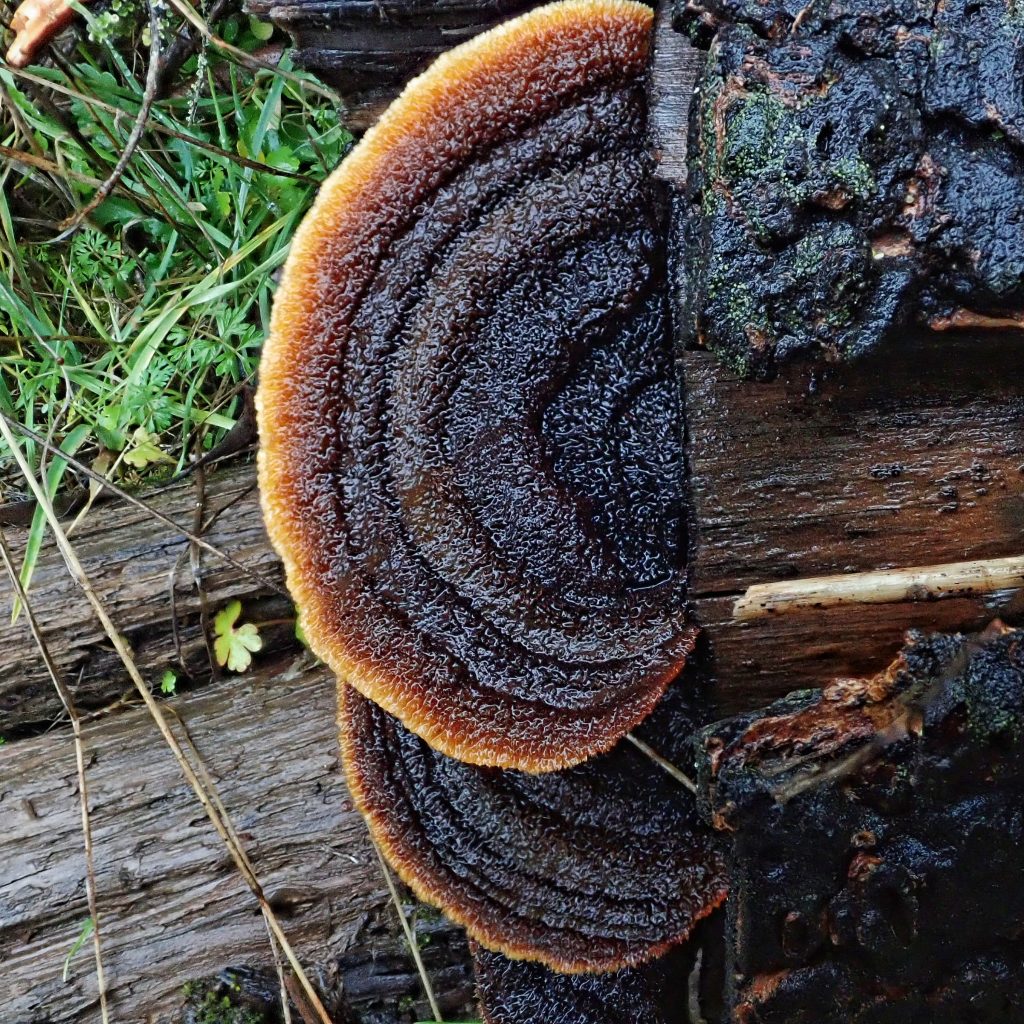
This is an interesting, and interesting looking, fungi, a seeming polypore with gills rather than pores, though genetic testing has confirmed them as indeed belonging to the order Polyporales. Since the polypores evolved from a line of the gilled mushrooms there was undoubtedly a recessive gene for gills still present, and some vagary of chromosomal combination produced a gilled bracket fungus, which was selected for by other vagaries of environmental conditions, such as habitat, climate, predation, etc. This sort of convergent evolution is far from unknown, and there are at least 3 other gilled polypores in our region- Porodaedalea pini, Lenzites (or Trametes) betulina, and Daedalea quercina.
ETA- The preceding paragraph may be irrelevant or downright incorrect, since I just discovered that this species, along with the other brown rot fungi, may have been placed in the order Gloeophyllales. I will check into the validity of this and update this profile accordingly.
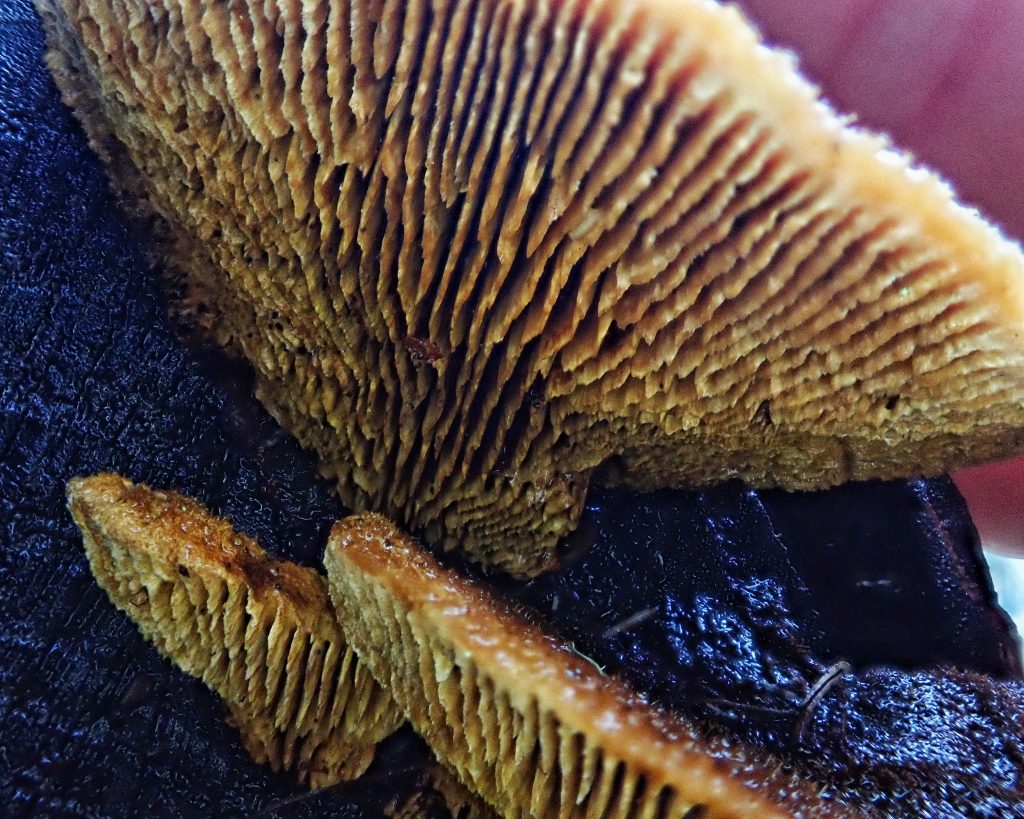
Unlike most of the bracket fungi I’ve profiled here, Gloeophyllum sepiarium is a brown rot saprobe, rather than a white rot saprobe. This means that it breaks down the cellulose in the wood, but leaves the lignin behind, rather than producing enzymes that decompose the cellulose and the lignin as white rot fungi do. In technical terms, cellulose is a polysaccharide while lignin is a phenolic polymer. Functionally, cellulose makes up the cell walls, and lignin strengthens them and makes them woody. Brown rot results in tiny dry (brown rot is sometimes incorrectly called dry rot for this reason; incorrectly because wood must be saturated with water for the fungal spores to germinate), crumbly rectangular brown blocks which help create topsoil, whereas white rot frees most of the nutrients in the wood, and leaves behind soft, damp, whitish, thready splinters. For the most part brown rot fungi only feed on dead or dying trees, but they may find a toehold on the wounds of otherwise healthy trees, and can be problematic when they do.
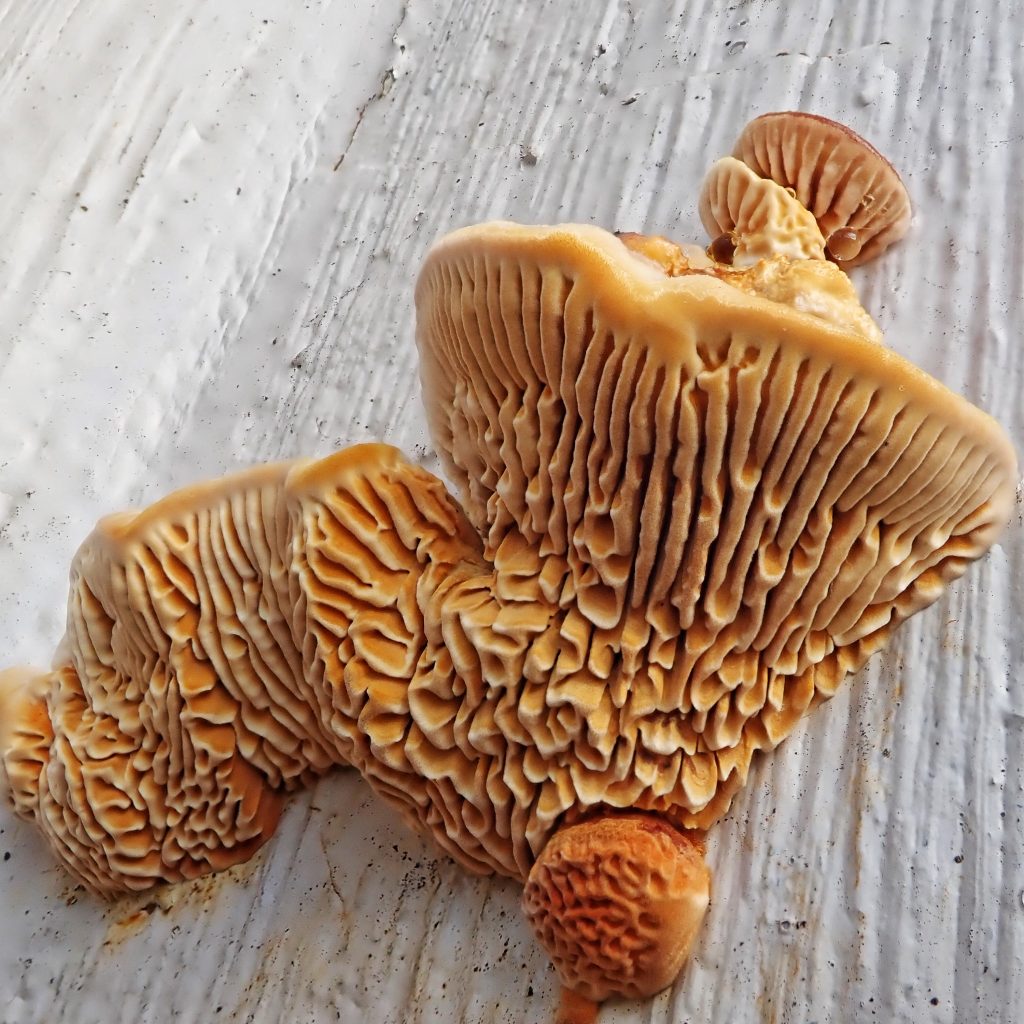
I was pretty confused the first time I saw Gloeophyllum sepiarium (which also goes by the common names conifer mazegill, rusty-gilled polypore, and yellow-red gill polypore). I say ‘the first time I saw’, but what I really mean is that it was the first time I saw the ventral surface. I had probably seen the dorsal surface before during my many tromps in the woods, and in my ignorance dismissed it as a Turkey Tail (Trametes versicolor), a species which is superficially similar from a top view. But this was bright orange with those unusual gills, and it was growing in the cracks of some siding on a relatively new house. It was too high up to reach, but I was able to extend my camera far enough to get some photos that turned out, to my surprise, to be diagnostic. I discovered it has a fondness for lumber and processed wood from Douglas firs (and conifers in general), and the cracks in the paint of that OSB siding were just enough to allow some fortuitous floating spores to germinate.
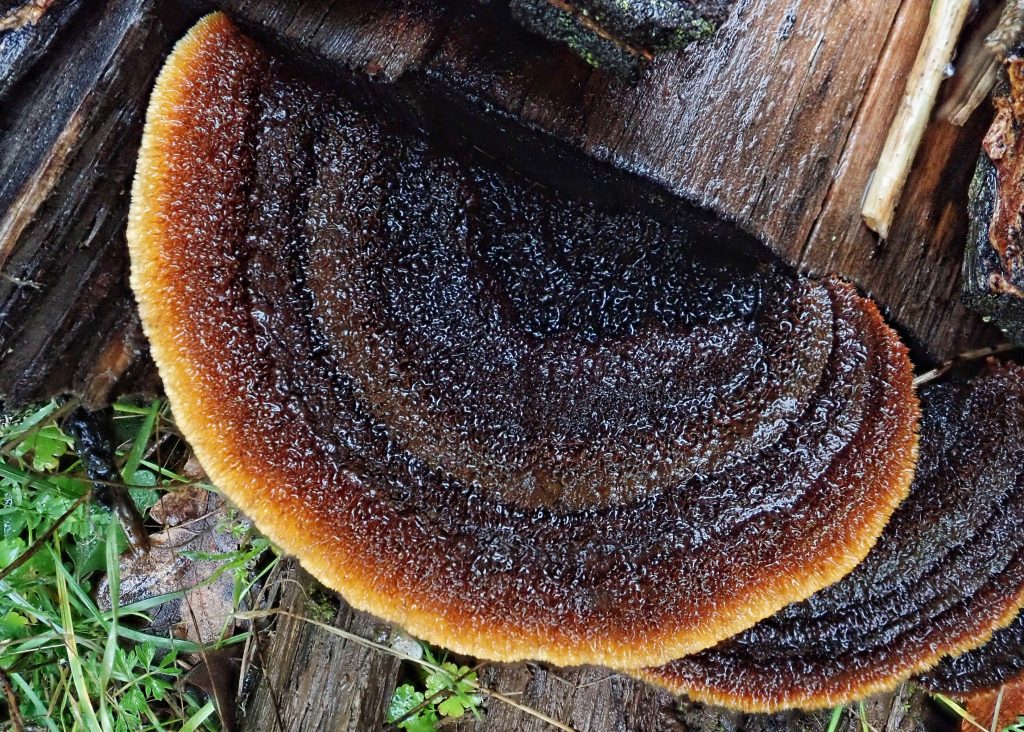
Gloeophyllum sepiarium is not considered to be an edible fungus, due primarily to its tough, corky texture. It has, however, shown antioxidant and anti-cancer properties, and along with many fungi is being studied for any other medicinal uses it may have. It has also shown great efficacy as a bioremediation tool, and one study indicated it had removed as much as 94% of the chromium from an area of soil. Unfortunately I could only access the abstract of the bioremediation study, and couldn’t access even that for some other studies on its anti-cancer properties.
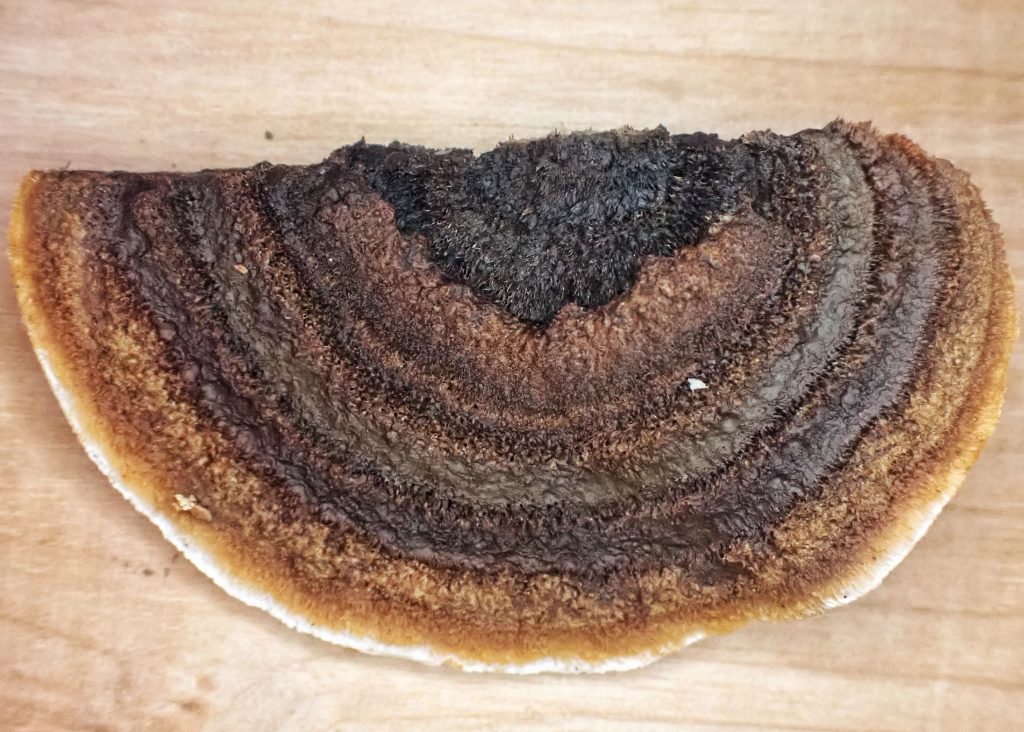
Description-Medium sized (up to 5” wide, usually 2-3” wide) bracket fungus with an orange to reddish brown or nearly black (as it ages) dorsal surface, usually with distinct bands, although becoming more uniform with age; cap somewhat hairy, soft, pliable, fairly thin, usually under 20mm think including gills; usually has the outermost, growing band orange; may also form capless specimens on the underside of boards and logs, whose only visible parts are the maze of gills; orange to rusty brown, mazelike gills and pores below; sporeprint white or very light pink, spores 9-12μm X 3-5μm.
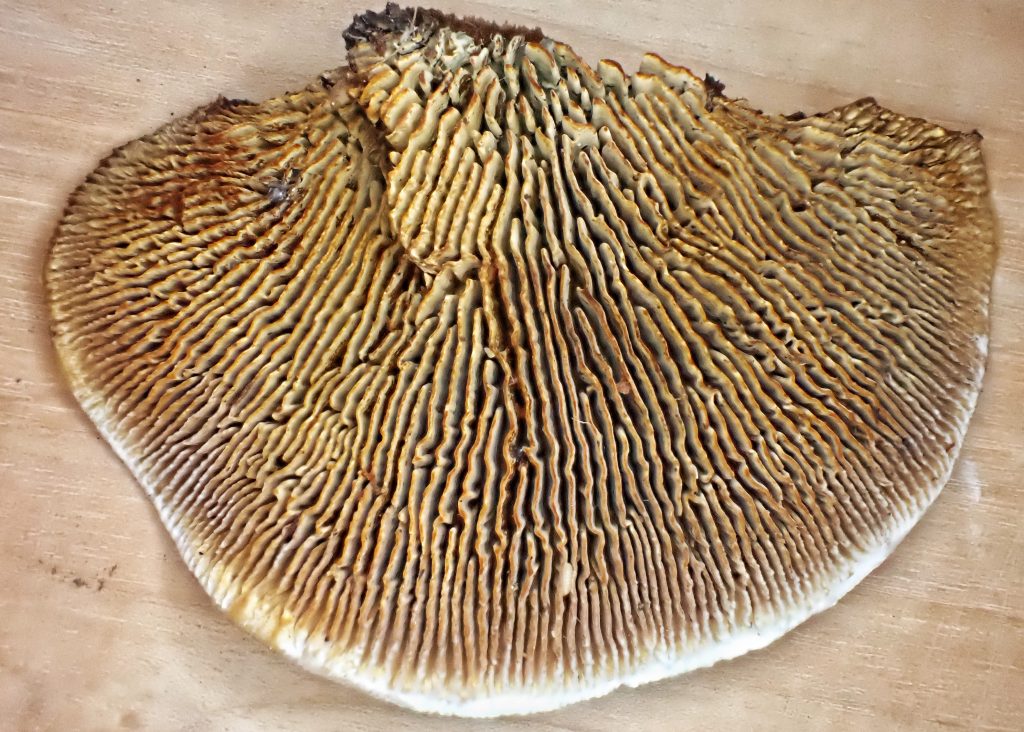
Similar species–Porodaedalea pini complex have a brown spore print, a hard, thick, rough cap, and tend to grow on live trees; Lenzites (or Trametes) betulina has white gills, and grows on hardwoods; Daedalea quercina has a lighter colored cap, white to cream gills, and grows on oaks.
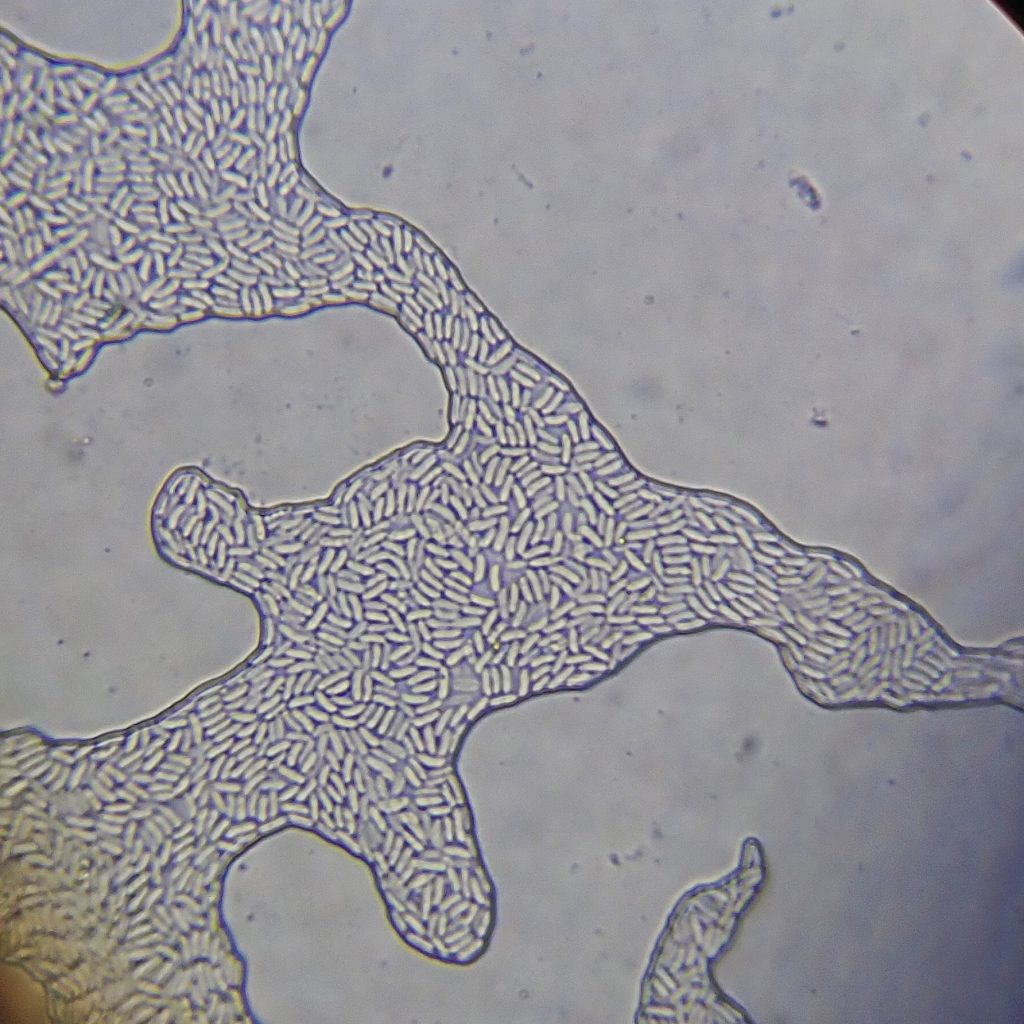
Habitat-Found on dead and dying conifer logs, stumps, trees, and lumber; occasionally also found on hardwoods in conifer dominated forests.
Range-Northern Hemisphere; region wide in appropriate habitat
Reproductive timing-Late summer and fall, but possibly year around in some climates and conditions.
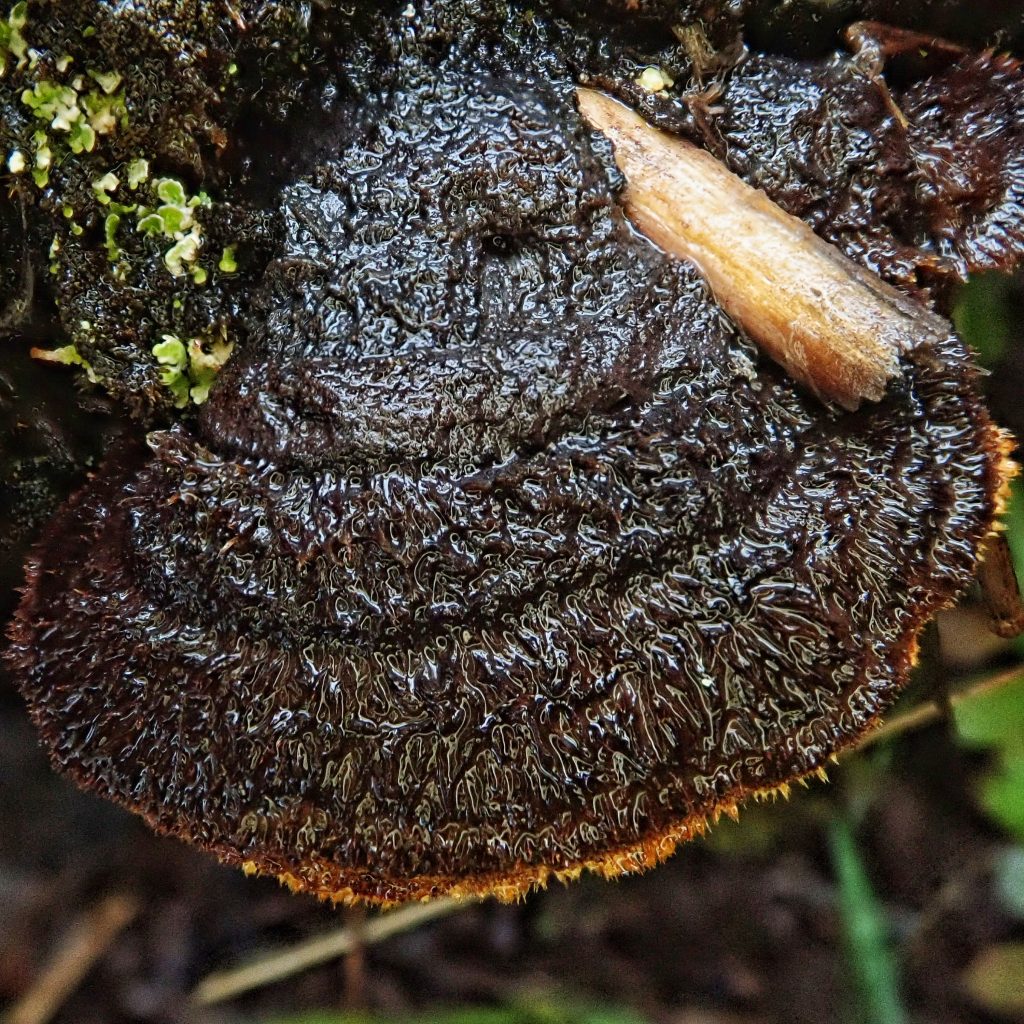
Eaten by-I can’t find anything specific for this species, but probably eaten by all of the usual suspects, including but not limited to, larvae of flies in the families Platypezidae, Mycetophilidae, and Phoridae; springtails in the order Entomobryomorpha, as well as many other collembolans; probably also consumed by slugs, snails, and some beetles in the families Leiodidae, Staphylinidae, Endomychidae, Tenebrionidae, and Erotylidae amongst others; and small mammalian herbivores.
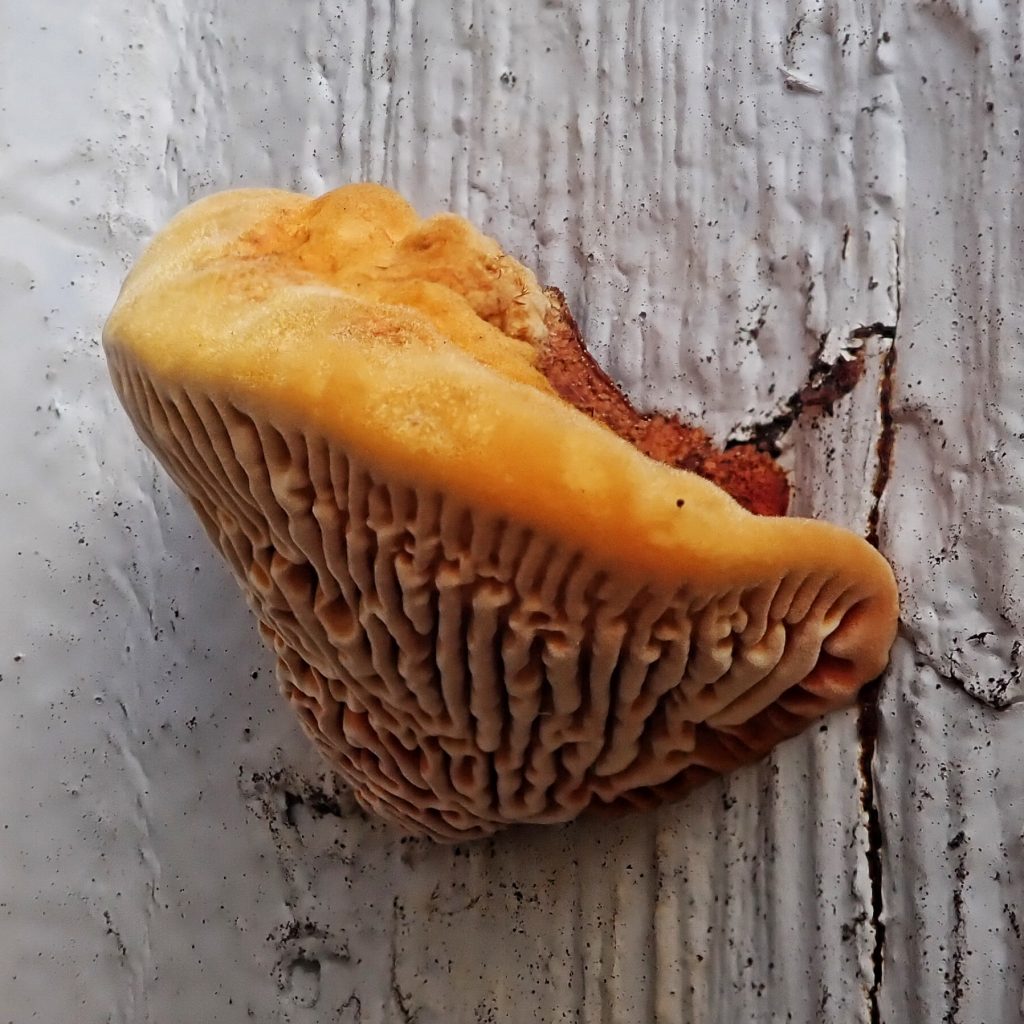
Etymology of names–Gloeophyllum is from the Greek words for ‘sticky leaved’, which probably refers to the gills. The specific epithet sepiarium is from the Latin word for ‘hedge/fence’, and refers either to it often being found on lumber and fencing, or to the maze-like structure of its gills.
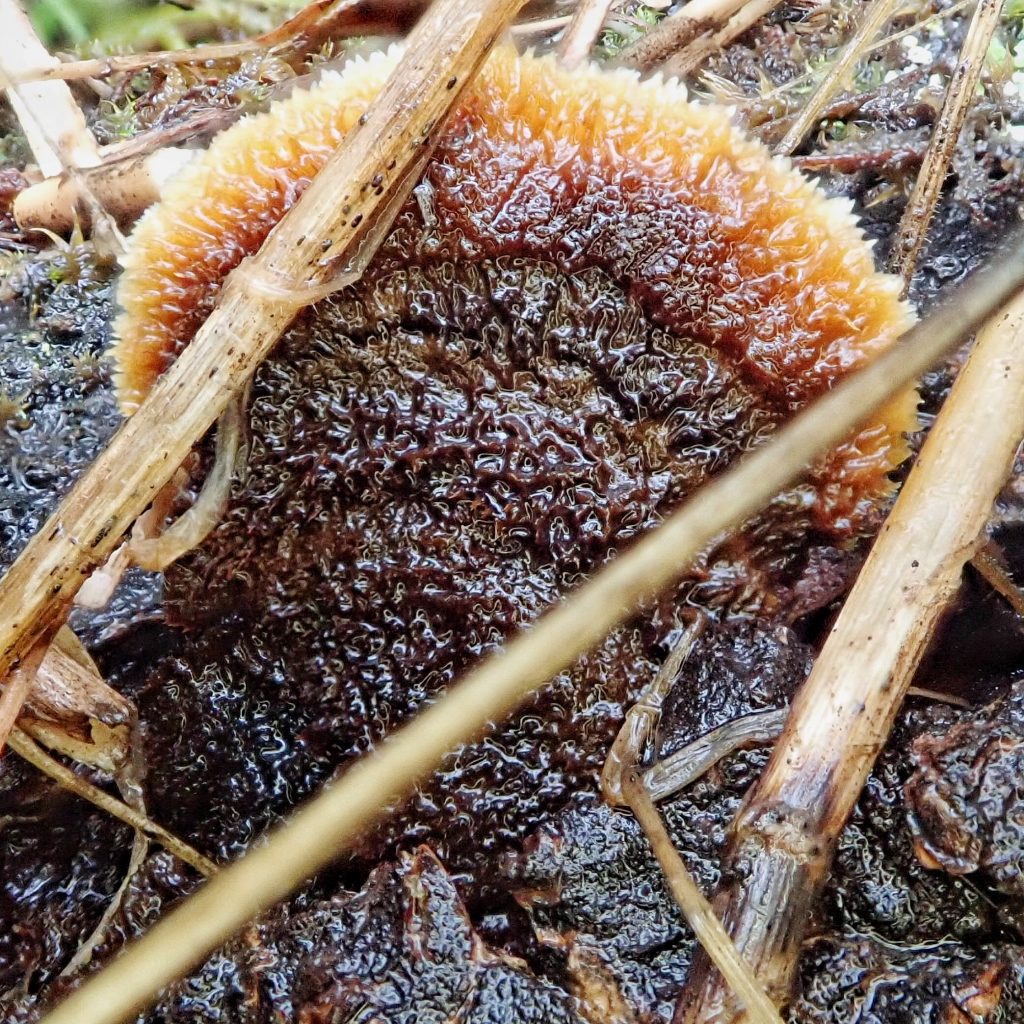
https://www.mushroomexpert.com/gloeophyllum_sepiarium.html
https://www.backyardnature.net/n/x/polygill.htm
https://ultimate-mushroom.com/poisonous/704-gloeophyllum-sepiarium.html
https://www.researchgate.net/publication/216694122_Fungal_Decay_of_Wood_Soft_Rot-Brown_Rot-White_Rot
https://en.m.wikipedia.org/wiki/Polysaccharide
gloeophyllum sepiarium bioremediation – Google Scholar
https://www.mushroomexpert.com/lenzites_betulina.html#essay
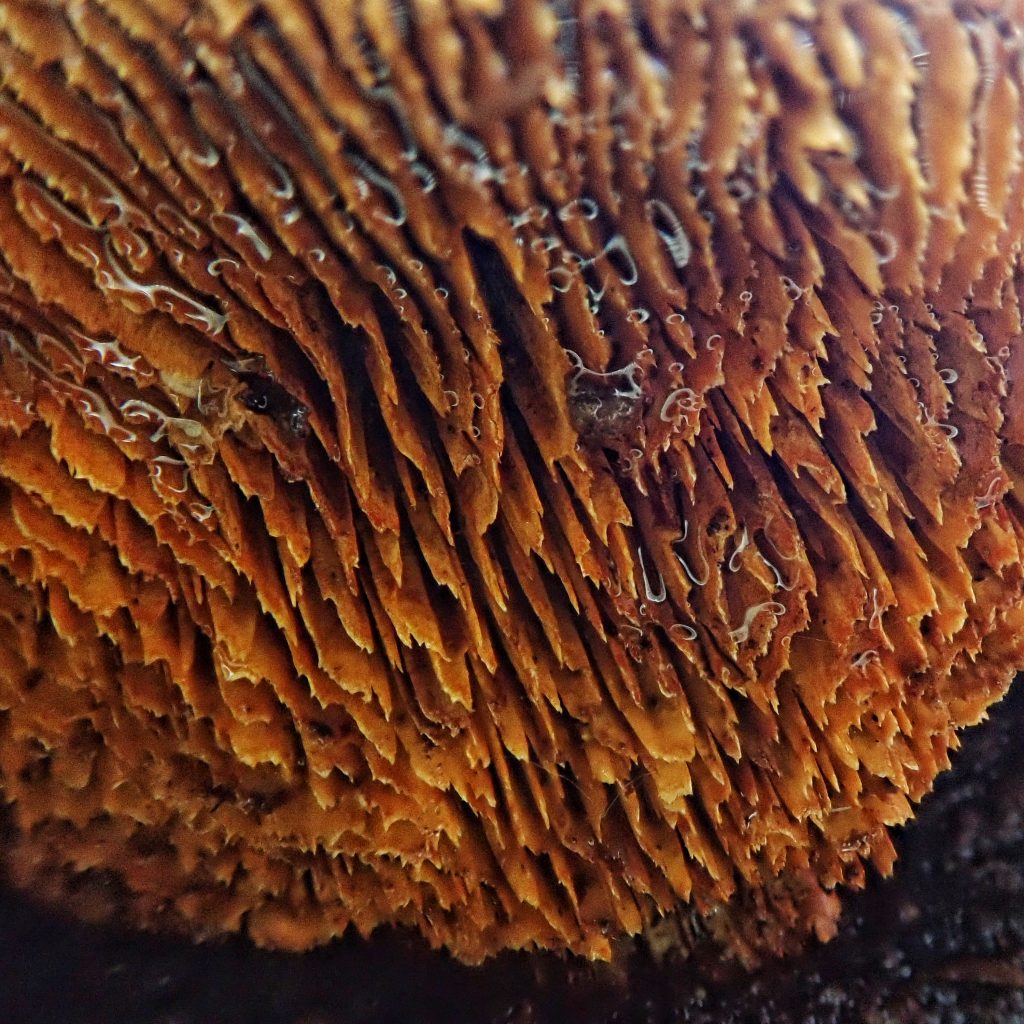
If you would like to dig in to more than just an abstract, check out Sci-Hub ( https://sci-hub.se/ ). It’s free and unlocks the doors. I use that site all the time when researching.
Great article!
Thanks! I use Sci-Hub quite a bit. I didn’t need it for this article. Sorry if you can’t access it.
Oops! I thought you were commenting on a different profile. But I did try Sci-hub for that article, and they didn’t have it. Thanks!